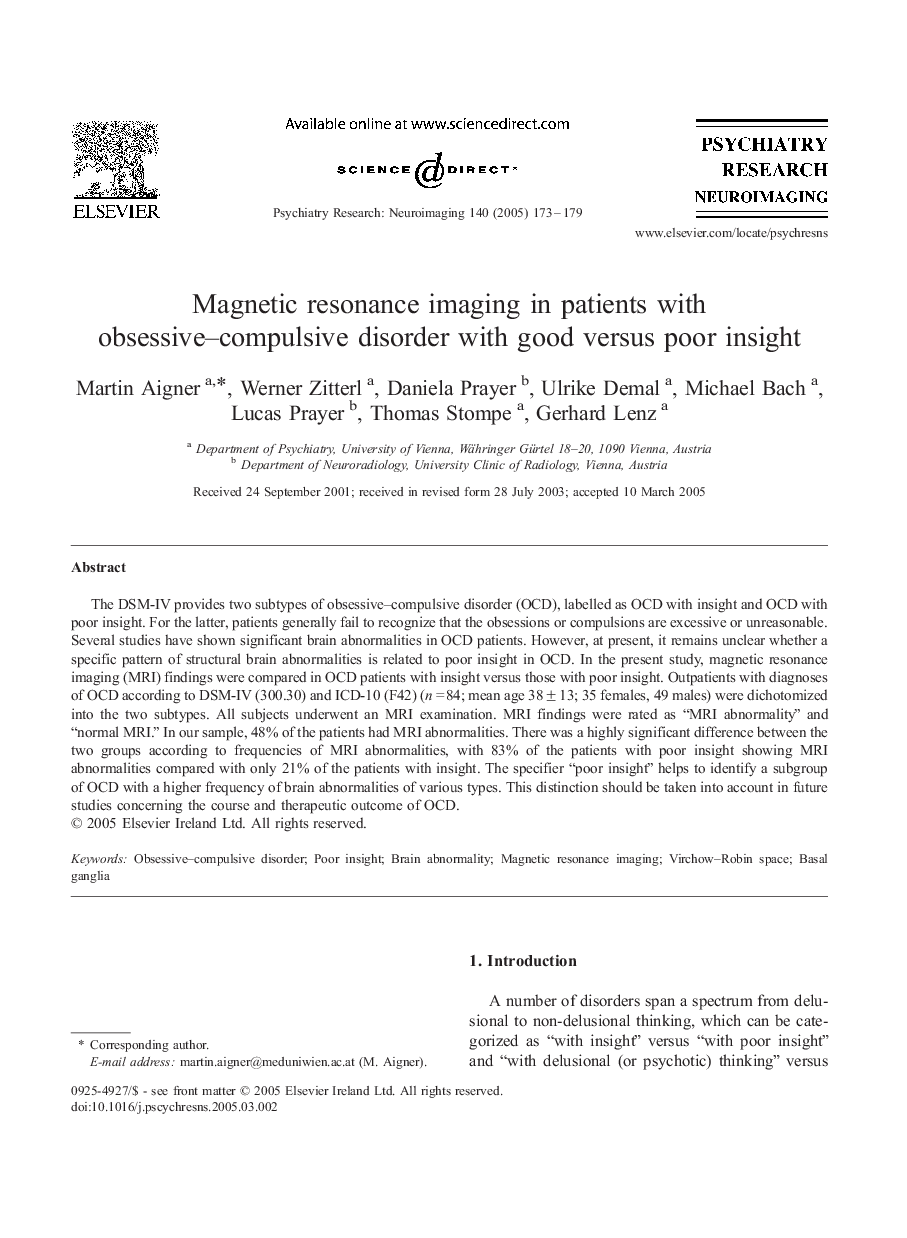| Article ID | Journal | Published Year | Pages | File Type |
|---|---|---|---|---|
| 10305400 | Psychiatry Research: Neuroimaging | 2005 | 7 Pages |
Abstract
The DSM-IV provides two subtypes of obsessive-compulsive disorder (OCD), labelled as OCD with insight and OCD with poor insight. For the latter, patients generally fail to recognize that the obsessions or compulsions are excessive or unreasonable. Several studies have shown significant brain abnormalities in OCD patients. However, at present, it remains unclear whether a specific pattern of structural brain abnormalities is related to poor insight in OCD. In the present study, magnetic resonance imaging (MRI) findings were compared in OCD patients with insight versus those with poor insight. Outpatients with diagnoses of OCD according to DSM-IV (300.30) and ICD-10 (F42) (n = 84; mean age 38 ± 13; 35 females, 49 males) were dichotomized into the two subtypes. All subjects underwent an MRI examination. MRI findings were rated as “MRI abnormality” and “normal MRI.” In our sample, 48% of the patients had MRI abnormalities. There was a highly significant difference between the two groups according to frequencies of MRI abnormalities, with 83% of the patients with poor insight showing MRI abnormalities compared with only 21% of the patients with insight. The specifier “poor insight” helps to identify a subgroup of OCD with a higher frequency of brain abnormalities of various types. This distinction should be taken into account in future studies concerning the course and therapeutic outcome of OCD.
Keywords
Related Topics
Life Sciences
Neuroscience
Biological Psychiatry
Authors
Martin Aigner, Werner Zitterl, Daniela Prayer, Ulrike Demal, Michael Bach, Lucas Prayer, Thomas Stompe, Gerhard Lenz,
